Review: 2014 Chevrolet Spark EV (With Video)

Outside North America, this little blue pill of an A-segment car is known as the Daewoo Matiz Creative. It may look an obsolete computer peripheral (or a pregnant roller skate), but GM claims that the Chevrolet Spark has more torque than a Ferrari 458 Italia. As a self-described technology lover, and card-carrying resident of the Left Coast, I had to check it out.
The Spark EV starts its life in Changwon, South Korea where gasoline and electric sparks are built by GM Korea, which was once known as Daewoo. But the heart of the Spark comes from America. GM is building the permanent magnet motors in Maryland, and instead of LG batteries made in Korea (like the Volt) GM is using American-made batteries courtesy of B456 (formerly A123. I’m not making this up). For reasons we don’t understand, GM isn’t “doing a CODA” and shipping cars sans-drivetran to America for assembly. The plant in Maryland ships the batteries and drivetrain to Korea, GM Korea inserts it in the car and ships the completed unit back to the USA.
The Spark EV exists because of my home state of California. The California Air Resources Board has mandated that Toyota, Honda, Nissan, Ford, GM and Chrysler make a total of 7,500 zero emissions vehicles available for sale by 2014 and 25,000 by 2017. By 2025, this number is expected to rise tenfold.
Exterior
Overall length slots the Chevy between the two-door Fiat 500e and the four-door Honda Fit EV but the small Chevy is narrower than both by a decent amount. Like the Fiat and other small cars, there’s something “cartoonish” about the Spark that is endearing. It’s all about proportions. The headlamps, tail lamps and grille are all fairly standard in size, but they are large in relation to the overall vehicle. The Spark isn’t alone in this, the same thing can be said of the Mini Cooper, Fiat 500 and Fiat 500L.
Because small cars tend to value practicality in design, the Spark has a tall roofline and the wheels have been pushed as close to the four corners as possible. This mechanical necessity pays dividends in handling and interior space but causes the Spark to look unusually tall when viewed head-on.
Interior
As with the gasoline version, the front seats are flat, firmly padded and offer little lumbar support. The hard plastics on the doors make for an uncomfortable place to rest your elbow, but there is a padded armrest in the center for the driver only. This isn’t unusual for compact cars, but electrification makes for strange bedfellows and the Leaf, Focus EV and Fiat 500e are direct competition that all offer more driver and passenger comfort.
Because of the Spark’s narrow width, the Chevy is a strict four-seater putting it on par with the 500e but one passenger behind the Fit, Leaf and Focus. It was surprisingly easy to put four tall adults in the Spark, a task that is more difficult in the considerably larger Focus because of its sloping roof-line. Still, passengers will be more comfortable in the Honda Fit which offers a bit more room for four, seating for five and more headroom all the way around. Despite the Leaf’s rear seat numbers being average, because of the way the seating position in the Leaf most people will find the Nissan roomier.
As with most gas to EV conversions, the Spark loses a bit of cargo volume in the process dropping 2 cubes to 9.6 cubic feet of cargo space. That’s slightly larger than the 500e, but a long way from the Leaf’s spacious 24 cubic foot booty. Unlike the Fiat 500e however, GM chose not sacrifice passenger footwell space for battery storage.
Infotainment
All Spark EVs get the same touchscreen head unit that is optional in the gasoline car. The system’s layout is simple, attractive and intuitive. Along the bottom of the screen sits a row of touch buttons for power, volume and a home button. After a week with Chevy’s entry-level system I was left wondering why every GM car can’t have this software. The system isn’t the height of modernity compared to uConnect or SYNC. It does not offer integrated voice commands, integrated navigation software or snazzy animations. This system’s claim to fame is in its simplicity and its integration with your smartphone.
Once you have an Android or iPhone paired with MyLink you can voice command your phone, your tunes, and anything on your device with the voice command button on the steering wheel. This means the mobile services provided my MyLink are limited to the app selection on your device. GM has taken another step that other manufacturers would do well to copy: integrated smartphone navigation. For $5 you can download the BringGo navigation app to your smartphone and the MyLink system will use the app as the processing engine and the car’s display as the user interface. This gives you a large, bright map with controls that look like a standard integrated navigation system coupled with the ability to pre-program addresses using the app before you get into the car.
In the Spark EV the MyLink system also handles vehicle charging control. You can choose to charge immediately, at a specific time, or you can program your electrical rates into the system and have the car charge when it is most economical. We of course get the typical power flow meter which is getting a little silly in the 21st century and a display that shows what percentage of your battery was used for driving, cabin heating/cooling and battery conditioning. Driving your Spark, or any EV, in a “polar vortex” will reduce battery life due to both cabin heating and battery heating.
Drivetrain
As with most EVs on the road power is delivered by a 3-phase AC motor connected to a fixed-speed reduction gear. EV’s don’t have a transmission in the traditional sense in order to reduce weight. If you want to go in reverse you spin the motor backwards and if you need neutral you simply disconnect the motor from the electrical path. Power output is rated at 140 horsepower and torque comes in at a whopping 400 lb-ft. (Most EV makers choose to electronically limit torque to reduce torque steer and improve battery life.)
Power is supplied by a 560lb, 21.3 kWh lithium battery pack located where the gas tank is in the gasoline Spark. As with the Chevy Volt, GM is taking the cautious path to battery preservation equipping the pack with an active heating and cooling system. That’s a stark contrast to the Nissan Leaf which uses a passive cooling system. Thanks to the lightest curb weight in the group (2,989lbs), the Spark scores 82 miles of EPA range and the highest efficiency rating of any EV to date. Depending on the weight of my right foot, my real world range varied from 70-100 miles.
For any battery, heat is the enemy. Especially when charging or discharging rapidly or when charging in hot desert climates. As a result I would anticipate that all things being equal, the Spark, 500e and Focus should suffer less capacity loss and battery degradation over time than the passively cooled Nissan Leaf.
The big news for 2014 is the world’s first implementation of the new SAE DC fast charging connector. I’m a bit torn on this twist in EV development. While I agree that the DC “combo connector” is more logical and compact than the competing CHAdeMO connector found on the Nissan Leaf and most EVs in Japan, there are already several hundred CHAdeMO stations in the USA and right now there is one SAE station. I’m told there is unlikely to be an adapter so this makes three charging standards on offer in the USA. One for Nissan and Mitsubishi, one for Tesla and one for GM and BMW (the i3 will use it as well.)
Drive
The biggest thing people forget about an EV isn’t charging related, it’s heat related. When you want to heat the cabin in a gasoline car you are using “waste” energy to do it. If you didn’t have the heater on, that heat would just end up dissipating via the engine’s radiator. Electric cars produce little heat when running and rely on resistive heating elements to heat the cabin and an electric air conditioning to cool the cabin. Heat pumps would be more efficient because they “move” heat rather than “creating” heat but so far the Nissan Leaf (SV and higher) are the only production cars to adopt this tech. In 50 degree weather on a 60 mile journey nearly 15% of the energy consumed went into heating the Spark’s cabin, while on my way home when it was 80 degrees only 8% of the energy was used to cool the cabin.
Thanks to a better weight balance vs the gasoline model and staggered tires, 185/55 front 195/55 rear, the Spark handles surprisingly well. Many have posited that this is simply a band-aid measure due to the weight shift in the car but all sources point to the Spark EV still being heavier in the front. This means the tire selection was likely done for handling reasons, which makes sense because the Spark beats the 500e in fun-to-corner metrics. The extra weight has also improved the ride in the small hatchback which, although still choppy on the freeway like many small hatches, it much smoother in EV trim. Steering is numb but accurate, a common complaint with EVs.
With 140 horsepower and 400lb0ft of twist routed through the front wheels, the Spark is probably the 2014 torque steer king. Is that bad? Not in my book. I found the effect amusing and perhaps even a challenge to control on winding mountain roads. The competition limits their torque output to reduce torque steer but in doing so they reduce the fun-factor as well as performance, something that really shows in the Spark’s 7.08 second run to 60, notably faster than the competition.
When it is time to stop the Spark comes up short. Stopping distances and fade aren’t the issue, it’s feel. The brake pedal is softer than average and the transition between regenerative and friction braking is probably the poorest, excluding the current generation Honda Civic Hybrid. When the system is entirely in friction braking mode (if the battery is full and you are going down hill) the brakes get even more vague, requiring more travel than when the system is regenerating to get the same effect.
Pricing
At $26,685, the least expensive EV on the market excluding the Mitsubishi i-MiEV. For $27,010 the 2LT trim swaps cloth seats for “leatherette” and adds a leather wrapped steering wheel. That’s about the fastest and cheapest model walk in the industry. GM tells us that the DC quick charge port is an independent $750 option and it cannot be retrofitted to a Spark shipped without it. The Spark undercuts Nissan’s Leaf by nearly $2,000 and the Fiat by more than $5,000. While I might argue that the Nissan Leaf is more practical than the Spark, GM’s aggressive pricing screams value at every turn, especially if you lease. At the time of our loan GM was offering a $199 lease deal on the Spark with $1,000 down plus the usual miscellaneous fees.
The Spark’s main sales proposition for many is as a commuter car. When you factor in everything the Spark is the cheapest way to drive in California’s carpool lanes (you know, other than actually carpooling.) Despite not being less attractive than a Fiat 500e, less practical than a Nissan Leaf and less luxurious than a Focus EV, I’d probably pick the Spark.
GM provided the vehicle, insurance and one tank of gas for this review
Specifications as tested
0-30: 2.72 Seconds
0-60: 7.08 Seconds
1/4 Mile: 15.78 Seconds @ 86 MPH
Average observed economy: 4.3 miles/kWh
Sound level at 50 MPH: 70dB

More by Alex L. Dykes
Latest Car Reviews
Read moreLatest Product Reviews
Read moreRecent Comments
- Norman Stansfield I'm training to be a mechanic, and have been told this or a Harley would be a good start.
- SilverHawk I watch out of loyalty to the sport even though it's often not as entertaining these days. But then, you have a race like Miami that gives us a driver's first win and my enthusiasm is refreshed. Congrats to Lando.
- Oberkanone Nope. No interest.
- SilverCoupe Tim, you don't always watch F1 as you don't want to lose sleep? But these races are great for putting one to sleep!I kid (sort of). I DVR them, I watch them, I fast forward a lot. It was great to see Lando win one, I've been a fan of McLaren since their heyday in CanAm in the late '60's.
- Cprescott The problem with this fable by the FTC is:(1) shipping of all kinds was hindered at ports because of COVID related issues;(2) The President shafted the Saudis by insulting them with a fist bump that torqued them off to no end;(3) Saudis announced unilateral production cuts repeatedly during this President's tenure even as he begged to get them to produce more;(4) We were told that we had record domestic production so that would have lowered prices due to increased supply(5) The President emptied the strategic petroleum reserve to the lowest point since the 1980's due to number 3 and then sold much of that to China.We have repeatedly been told that documents and emails are Russian disinformation so why now are we to believe this?



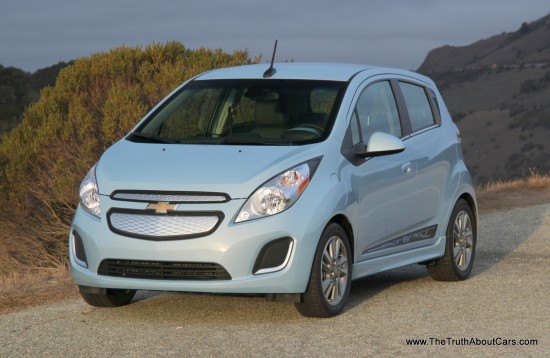










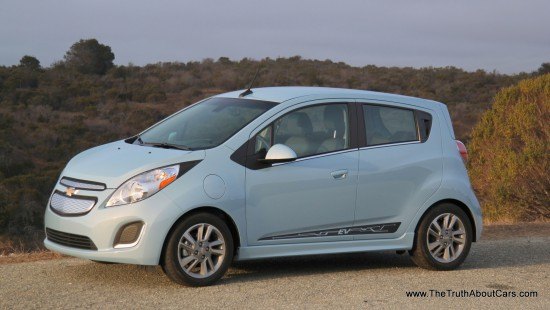




























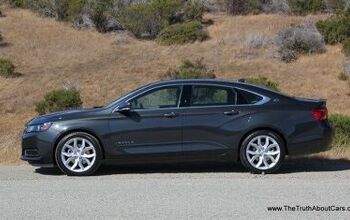
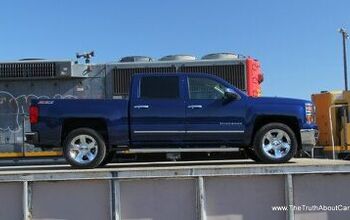
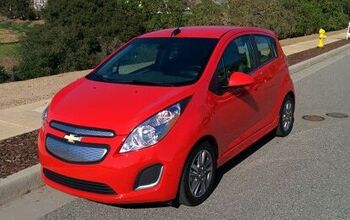












Comments
Join the conversation
The Chevy Volt/ELR battery is now made in Michigan, BTW. A significant factor left out of this article is that the improved efficiency/range of the Spark EV compared to others is precisely the GM-developed motor. Motors of other EVs were developed from existing on-the-shelf industrial units. Most industrial motors in this range of power output are fixed-speed and not optimized for use in a variable speed application. GM's motor was designed from a blank slate to be used in cars and hence, are more efficient in that role.
Great article. How do you rotate staggered tires? They often are rotational and since front is narrower than rear you really have no way to rotate tires. Besides the Smart I don't know of a car with staggered tires. Seems weird and likely more expensive to replace a set since normally a set of four gives you a discount.